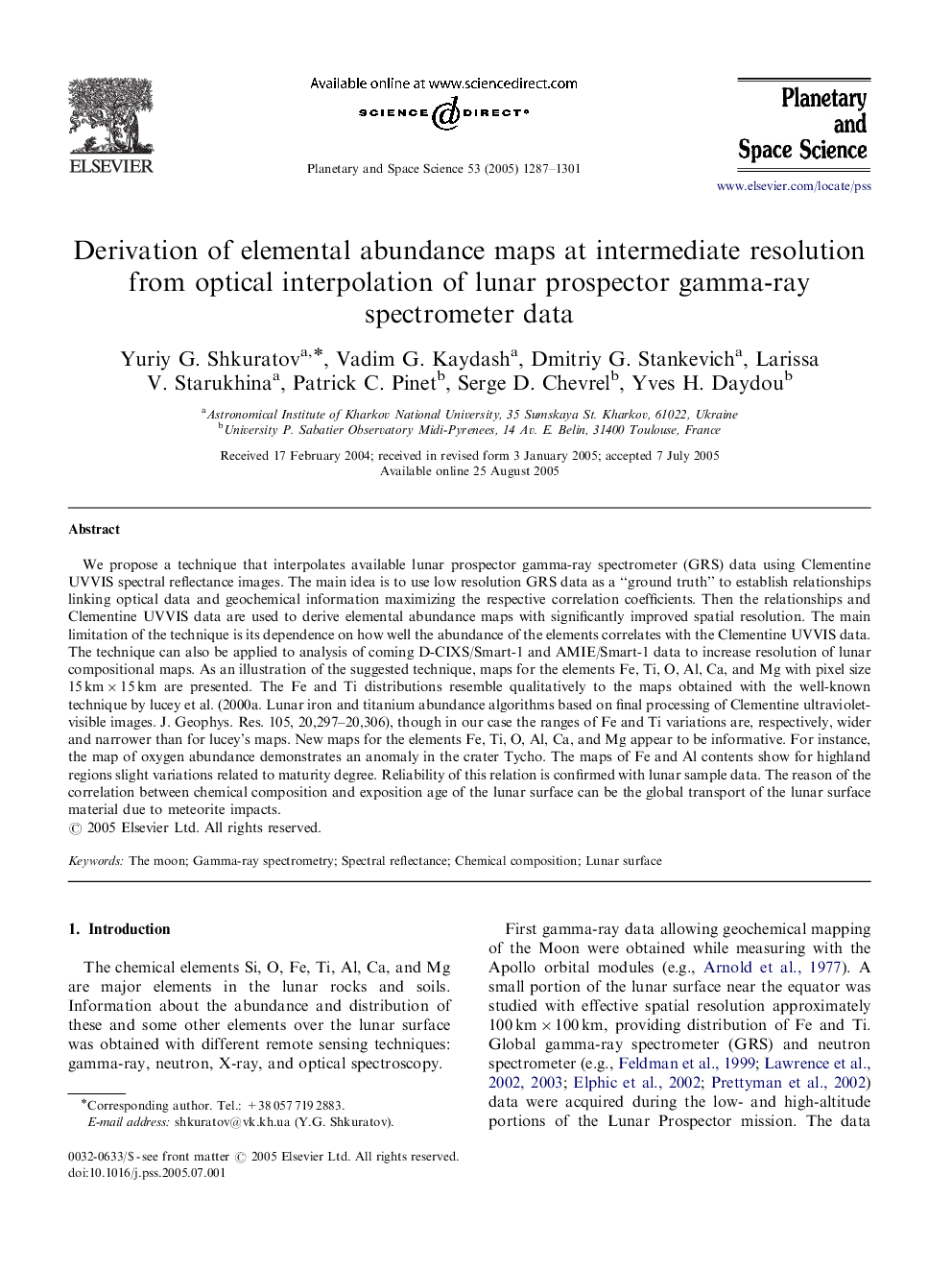| Article ID | Journal | Published Year | Pages | File Type |
|---|---|---|---|---|
| 10705445 | Planetary and Space Science | 2005 | 15 Pages |
Abstract
We propose a technique that interpolates available lunar prospector gamma-ray spectrometer (GRS) data using Clementine UVVIS spectral reflectance images. The main idea is to use low resolution GRS data as a “ground truth” to establish relationships linking optical data and geochemical information maximizing the respective correlation coefficients. Then the relationships and Clementine UVVIS data are used to derive elemental abundance maps with significantly improved spatial resolution. The main limitation of the technique is its dependence on how well the abundance of the elements correlates with the Clementine UVVIS data. The technique can also be applied to analysis of coming D-CIXS/Smart-1 and AMIE/Smart-1 data to increase resolution of lunar compositional maps. As an illustration of the suggested technique, maps for the elements Fe, Ti, O, Al, Ca, and Mg with pixel size 15Â kmÃ15Â km are presented. The Fe and Ti distributions resemble qualitatively to the maps obtained with the well-known technique by lucey et al. (2000a. Lunar iron and titanium abundance algorithms based on final processing of Clementine ultraviolet-visible images. J. Geophys. Res. 105, 20,297-20,306), though in our case the ranges of Fe and Ti variations are, respectively, wider and narrower than for lucey's maps. New maps for the elements Fe, Ti, O, Al, Ca, and Mg appear to be informative. For instance, the map of oxygen abundance demonstrates an anomaly in the crater Tycho. The maps of Fe and Al contents show for highland regions slight variations related to maturity degree. Reliability of this relation is confirmed with lunar sample data. The reason of the correlation between chemical composition and exposition age of the lunar surface can be the global transport of the lunar surface material due to meteorite impacts.
Related Topics
Physical Sciences and Engineering
Earth and Planetary Sciences
Geophysics
Authors
Yuriy G. Shkuratov, Vadim G. Kaydash, Dmitriy G. Stankevich, Larissa V. Starukhina, Patrick C. Pinet, Serge D. Chevrel, Yves H. Daydou,
